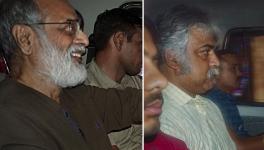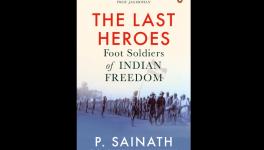Bicentenary Year of Mirat-ul-Akhbar: India’s Pioneering Persian Newspaper that Embodied Resistance

Raja Ram Mohan Roy, founder and editor of Mirat-ul-Akhbar. Image credit: Deccan Herald
At a time when India faces the double whammy of linguistic imposition and attacks on the free press, April 12 marked a historic day as India’s first Persian newspaper Mirat-ul-Akhbar completed 200 years.
The newspaper Mirat-ul-Akhbar – the title of which translates to ‘Mirror of News’ – was founded by Raja Ram Mohan Roy in the year 1822 in Calcutta. It used to be published on Fridays every week.
In 1803-4, Mohan Roy had presented his first Persian seminal writing in the form of a book named Tuhfat-ul-Muwahhidin to monotheists. And again, he wrote his second Persian book, Monozeautul Adiyan, focusing on discourses of religion in 1814. His improved grip on the Persian language probably led to the founding of Mirat-ul-Akhbar in 1822.
In the first issue of the weekly, Ram Mohan wrote, “[T]he object of the paper was not to shower praises upon its promoters or his well-wishers or to scandalise anybody. On the contrary, it aims at reaching the truth.” The second issue focussed on the British Constitution.
Akhbar’s take on persisting social evils like sati, child marriage, its opposition to religious fundamentalism, and emphasis on rationality and science constituted the multidimensional approach of the reformer. Raja Ram Mohan Roy was considered to have been influenced by Western modern thought and stressed on rationalism and modern scientific approach that reflected in his writings about topics such as on echo in acoustics, properties of the magnet, behaviour of the fish, and description of a balloon.
Roy’s Journalism of Resistance
Dr. P. Thangamuthu, assistant professor at Research Department of history in PT MTM College in Tamil Nadu, writes in an article: “Ram Mohan’s editorial criticism of popular Christian faith, English foreign policy and of the British insolence on public roads towards the common people appeared too venomous for the British administration in India to swallow.”
Roy’s other editorial criticism lambasting the Judge of Camilla, John Haynes, on the cruel treatment of a civilian led to a trial of the judge in the Supreme Court in April 1822, according to Thangamuthu’s article. Such an impact vis a vis a higher official of the English judiciary was one of its kind in the era.
But Akhbar’s functioning – which meant great trouble for the imperial rulers – was bound to bear the brunt of the rulers’ hostility. The newly promulgated press ordinance curtailed the liberty and expression of free press and as a mark of protest, Mohan Roy had to close the newspaper in 1823, citing his inability to publish the paper under the degrading conditions set by the ordinance.
What Mirat-ul-Akhbar embodied back in the day was resistance – which is precisely missing today to a great extent. According to veteran journalist P Sainath, the quality and kind of journalism represented by Mirat-ul-Akhbar is more relevant in contemporary India than ever before. The editorial written during the British Raj, which managed to put a judge on trial in the Supreme court, was hard-hitting journalism. Mohan Roy’s prospectus of the paper with editorial stating that there will not be singing of praises of the sponsor also point to his will to resist. Sainath, commenting on Roy’s journalistic ethics, mentioned that the man who ended ‘sati’ in the country, did not speak of giving the right to reply to the supporters of sati – unlike today’s model of right to reply for those who are oppressing or siding with oppressors. In our times, the only valuable journalism is the journalism of dissent.
Significance of Persian
Persian during the 18th century was still being used as a court language as well as among the educated, intellectuals, and the top policymakers of the country. Introduction of Persian or Farsi to the Indian subcontinent was by Central Asian Persian rulers in the 13th century. The language enjoyed a good reputation in literature and philosophy – just like that enjoyed by the English language in modern India. After having played a key role in communication and literature, the language was replaced by English in the late 19th century. It has nonetheless contributed thousands of words to the vocabularies of not merely Hindi and Urdu but also Bengali, Marathi, and Gujarati.
The quest to keep Persian language relevant and preserve the flame, Iran Society in Calcutta has played a crucial role. The 77-year old Centre for Persian Studies was formed by Md. Ishaque, a noted Persian scholar. While studying at the School of Oriental and African Studies in London between 1938 and 1940, he came across the Iran Society, London, which was engaged in promoting Persian studies. And subsequently, on return to India, set up a similar society in the city. The Iran Society has been bringing out a quarterly journal without interruption for the past 75 years in bound volumes. It also provides scholarships to students and holds conferences.
Dr. Fuad Halim, the member of the council of Iran Society and of the editorial board of the Indo-Iranica journal, told NewsClick that India’s medieval history exists in Persian, which deserves to be preserved.
The writer is a freelance journalist.
Get the latest reports & analysis with people's perspective on Protests, movements & deep analytical videos, discussions of the current affairs in your Telegram app. Subscribe to NewsClick's Telegram channel & get Real-Time updates on stories, as they get published on our website.
























